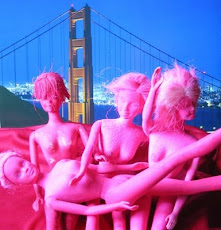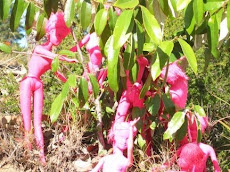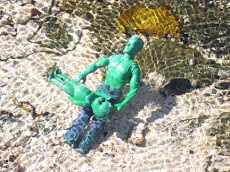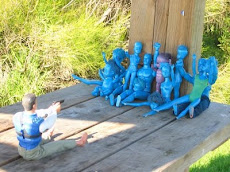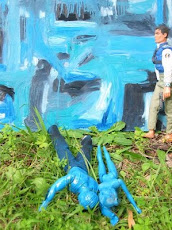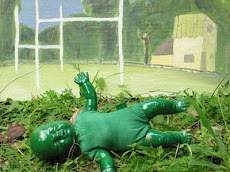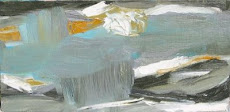Thursday, October 2, 2014
Wednesday, March 19, 2014
Biomorphic Sculptures
Biomorphic Sculptures
I have been developing biological-like sculptures based on research into plants
The Animal Within
2014
It seems that clothes for women with animal references are
fashionable again. I have seen materials with leopard and ocelot spots, various animal
stripes (Zebra) and reptile patterns (stretched snake or lizard skin patterns). Are
these our Jungle clothes, for the ‘Woman on the Prowl’ as Good Weekend Mag says?
(March 2011) My hairdresser informed me that “On the catwalk this autumn (in
Hong Kong) 80s
fashions are back in.” She told me that 80’s hairdos have
lots of soft curls, she didn’t mention animal prints. Another magazine told me that women
have to release the animal within on another page tame the animal within. I was
also told I could go on safari wearing animal print clothes!
Spots and stripes are common but why not insect patterns? Lady
Bird spots, red on black is very sexy. Not just in clothing for children or
children’s furniture. What about Bronze Orange Bug, they are very colourful (also toxic)? What
about cockroaches? They are also very sexy with their black segmented armour-like
body parts. There could be very sheer fabric sewn between the plates for
cooling purposes.
Why not consider using ideas from spiders? Their hairy
appendages could be used in appealing animal–like patterns. Imagine a large floor covering
with the spider’s hairy legs used as the pattern and a naked female lying on it.
Prowling! Or jumping spiders with their luminescent colours and many shiny bright eyes, they
would make lovely coloured patterned designs for clothing.
How about marsupial-influenced clothes with pouches and long
tails attached to clothing? The pouches would be very useful for shopping and
errands. I had a friend in England (when we were young Ozzies doing our motherland
tour) who used to tell the Poms that we all had pet kangaroos back home in Australia to
do the shopping for us. She’d say “we put a note and some money in their pouch
and send them off to the
shops”. A large pouch built into our modern clothes would be
very useful. The pouch could be attached across the breast area and human young
could be carried in the pouch and be able to access its milk supply whilst the
mother is on the prowl. Just like marsupials!
Foot and claw prints (from dinosaurs) on clothing would be
good, or teeth prints fromvarious animals. Shark mouths with pink and white colouring,
with a little bit of red could work. Snake mouths with the bifurcated tongue
and the blue tongues of Blue Tongue lizards would be interesting. Or horse’s
mouths with green grass between the teeth would surely bring out the animal
from within. How about a lion’s mane across the chest area of a summer frock?
It was an International Women’s Day function at the local museum. There was the usual mix of women from a small community. There were old ladies who helped out at the museum, women from the CWA, View club and Zonta, all women’s service organisations. And there were women from the Women’s Refuge, the Women’s Health Centre and women’s education courses at TAFE. There were middle class women and the others. There were women dressed up and others who dressed down. There were heterosexual women and lesbians, a cross section of the community. And there were two women on the prowl. They weren’t young but they had their jungle clothes on.
One of the women wore
spots and the other wore animal–like patches (perhaps giraffe) and lots of gold jewellery. The gold jewellery seemed like a contradiction. How can a woman,
when on the prowl be animal-like when adorned with bright minerals? Imagine
soldiers in camouflage gear and gold. They would be soon picked off by the
enemy. Imagine women on the prowl with their animal print clothing and heavy
gold jewellery crawling through waist high grasses.
I also wondered at the purpose of being on the prowl at an
IWD function! There were very few men present (or none) so were they on the prowl for
women?
What is ‘On the Prowl’? What do women do ‘On the Prowl’? Is it part of our biological destiny, instinct, urge to
capture a mate and perform a mating ritual? So currently (and it obviously
changes in the minds of designers in different seasons) these prowling
behaviours need animal-like (other than human) references to be successful. Am
I missing something, is it really about men being attracted to animals? So it
is the print he is attracted to not the person underneath the clothes!
Personally, I need clothes for a woman who lives in the 21st
century, not in caves or in prehistoric times. I don’t want to be knocked on
the head by an animal-bone club by some Freddy Flintstone. And I want clothes
that are made from natural organic fibres that breathe in hot climates and that
are comfortable to wear. I want to be loved and communicated to through my
brain not my ‘animal within’. I want my jungle to consist of books and politically
aware, caring, people who are interested in ideas and how to change the world,
not what chemical you put on your body. And, I don’t want to be manipulated by
an advertising company on behalf of some other commercial interest about what
the correct thing is to wear!
The women ‘on the prowl’ were exposing their ‘animal within’
with a little touch of glitter and bling. Were they on the lookout for tall,
dark, handsome and loaded? But there
were no men. It was International Women’s Day and all the men were at home
working; washing, cleaning, dusting and bending over double putting the rubbish
out. It was a lost cause. They must be confused, they had come to the wrong
jungle.
© Kaye Johnston 2014
Sunday, February 26, 2012

Just Launched Kaye's Bug Book!!!!!
Buy one now $10 + postage $1.20 AU
Moonraker Productions PO BOX 186 Berry 2535 NSW Australia kayecj@westnet.com.au
very limited edition.
42 A5 pages bound with plastic combs. Pigment inkjet printed (achival)
Friday, January 28, 2011
Monday, January 24, 2011
Biomorphic Sculptures 'Filaments'


I have been developing biological-like sculptures based on research into plants, seeds, fungi, fish, microscopic plankton, viruses and bacteria. They are constructed from found sticks and pruned wood, plastic lawn trimmer cord, glue and oil paint. I use traditional mortise and tenon joinery method.
Images: Biomorph Sculpture 'Filaments'
Subscribe to:
Comments (Atom)










